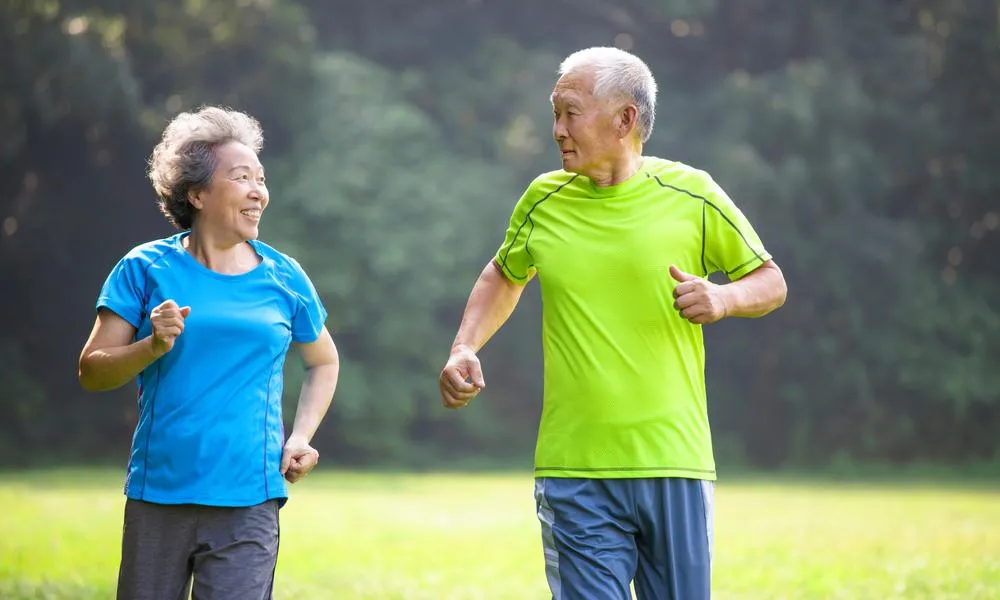Improving Physical Activity Could Add Over 5 Years to Life Expectancy
In recent years, numerous studies have shed light on the significant benefits of physical activity for improving overall health and longevity. A groundbreaking study has revealed that increasing physical activity levels could add more than five years to life expectancy. The study, which draws from extensive data on the link between exercise and health, underscores the profound impact of a physically active lifestyle on reducing the risk of chronic diseases and enhancing quality of life. In this article, we will explore how increasing physical activity can contribute to a longer and healthier life, the science behind it, and practical ways to incorporate more movement into daily routines.
The Link Between Physical Activity and Longevity
Physical activity is widely recognized as one of the most important factors in promoting overall health and longevity. Numerous studies have consistently shown that regular exercise can reduce the risk of a wide range of chronic diseases, including heart disease, diabetes, stroke, and certain types of cancer. Furthermore, exercise has been found to improve mental health, cognitive function, and overall well-being.
The latest findings suggest that increasing physical activity levels could extend life expectancy by more than five years, particularly for individuals who are sedentary or have low levels of physical activity. This discovery comes from research that examines the impact of various forms of exercise—such as walking, cycling, strength training, and aerobic activities—on life expectancy.
The Science Behind the Impact of Physical Activity on Life Expectancy
To understand how physical activity can extend life expectancy, it’s essential to explore the biological mechanisms that link exercise with longevity. Below are some key ways in which physical activity contributes to a longer life:
1. Reduction of Chronic Disease Risk
Regular physical activity has been shown to significantly reduce the risk of several chronic diseases, including cardiovascular disease, diabetes, and certain cancers. One of the main benefits of exercise is its ability to improve heart health. Exercise strengthens the heart, increases blood flow, and improves circulation, which lowers the risk of heart attacks, strokes, and hypertension.
Additionally, exercise helps regulate blood sugar levels and improves insulin sensitivity, which reduces the risk of type 2 diabetes. Studies have also shown that physical activity can lower the risk of developing certain types of cancer, such as breast, colon, and lung cancer. This is likely due to the positive effects of exercise on the immune system, hormone regulation, and inflammation reduction.
2. Improved Mental Health and Cognitive Function
Physical activity is not only beneficial for the body but also for the mind. Regular exercise has been shown to reduce symptoms of anxiety, depression, and stress, all of which can negatively impact life expectancy. Exercise promotes the release of endorphins, the brain’s “feel-good” hormones, which help improve mood and reduce feelings of anxiety and sadness.
Moreover, exercise is linked to improved cognitive function and a lower risk of cognitive decline and dementia in older adults. Aerobic exercise, in particular, has been shown to increase brain volume, enhance memory, and improve executive function. These cognitive benefits are especially important for maintaining independence and quality of life as we age.
3. Weight Management and Metabolic Health
Obesity is a major risk factor for a variety of chronic diseases, including heart disease, diabetes, and certain cancers. Regular physical activity helps maintain a healthy weight by burning calories and improving metabolism. Exercise also helps regulate key metabolic processes, such as lipid and glucose metabolism, which are crucial for preventing metabolic disorders.
In addition to weight management, physical activity improves the function of key organs, such as the liver and kidneys, which play important roles in detoxification and waste elimination. By improving metabolic health, exercise reduces the strain on these organs and contributes to a longer, healthier life.
4. Improved Immune Function
Regular physical activity helps strengthen the immune system, making it more efficient at fighting infections and diseases. Exercise has been shown to increase the production of white blood cells, which are essential for immune defense. Physical activity also helps regulate inflammation in the body, which is a key factor in the development of chronic diseases.
By improving immune function, exercise helps protect the body against infections and reduces the risk of developing age-related diseases. As we age, the immune system becomes less efficient, but regular physical activity can help counteract this decline and improve overall health.
5. Enhanced Longevity at the Cellular Level
Exercise has a direct impact on the aging process at the cellular level. One of the most significant ways that exercise extends life expectancy is by influencing telomeres—protective caps at the ends of chromosomes. As we age, telomeres shorten, which is associated with cellular aging and the onset of age-related diseases. However, studies have shown that regular physical activity can help preserve the length of telomeres, thus delaying cellular aging.
In addition to telomere preservation, exercise promotes the production of antioxidants, which protect cells from oxidative stress and damage. This helps reduce the accumulation of cellular damage over time, preventing the development of age-related diseases and promoting overall longevity.
How Much Physical Activity Is Needed to See the Benefits?
While it’s clear that physical activity is beneficial for longevity, the question arises: how much exercise is needed to reap these benefits? According to the World Health Organization (WHO) and other health authorities, adults should aim for at least 150 minutes of moderate-intensity aerobic activity or 75 minutes of vigorous-intensity aerobic activity per week. This can be spread throughout the week, with activities like walking, cycling, or swimming being great options for achieving this target.
In addition to aerobic exercise, it is also recommended to incorporate muscle-strengthening activities at least two days per week. Strength training helps maintain muscle mass, bone density, and metabolic function, which are crucial for overall health, particularly as we age.
However, even smaller amounts of physical activity can be beneficial. Studies have shown that small increments of physical activity—such as taking the stairs instead of the elevator, walking more during daily routines, or engaging in light stretching—can still provide significant health benefits, especially for those who are currently sedentary.
Overcoming Barriers to Physical Activity
Despite the well-established benefits of physical activity, many people struggle to incorporate exercise into their daily lives. Common barriers include a lack of time, motivation, or access to facilities, as well as physical limitations due to age or injury. Overcoming these barriers is essential for improving public health and longevity.
1. Making Physical Activity Enjoyable
One of the most effective ways to increase physical activity levels is to make it enjoyable. Finding an activity that you genuinely enjoy, whether it’s dancing, hiking, swimming, or playing a sport, can help make exercise feel less like a chore. Engaging in group activities or classes can also increase motivation and provide a sense of social connection.
2. Incorporating Movement into Daily Life
For those with busy schedules, finding ways to incorporate more movement into daily routines is key. Simple changes, such as walking or biking to work, taking the stairs instead of the elevator, or scheduling regular walking breaks during the day, can increase physical activity levels without requiring major lifestyle changes.
3. Setting Realistic Goals
Setting realistic, achievable goals is crucial for maintaining motivation and building a consistent exercise routine. Start with small goals, such as walking for 10 minutes a day, and gradually increase the duration and intensity as you become more comfortable. Tracking progress and celebrating small victories can also help keep motivation high.
4. Seeking Professional Guidance
For individuals with physical limitations or health concerns, consulting with a healthcare provider or fitness professional can be helpful in designing a safe and effective exercise plan. A customized fitness program that takes into account individual needs, preferences, and limitations can improve the likelihood of success and ensure long-term benefits.
The evidence is clear: improving physical activity levels can significantly increase life expectancy and enhance overall health. Regular exercise reduces the risk of chronic diseases, improves mental health, and slows the aging process at the cellular level. The latest findings suggest that increasing physical activity could add over five years to life expectancy, making it one of the most effective and accessible ways to improve longevity.
To reap the benefits of physical activity, it’s important to aim for at least 150 minutes of moderate-intensity exercise per week and incorporate strength training into the routine. Overcoming common barriers to physical activity, such as lack of time or motivation, is essential for maintaining an active lifestyle.
Incorporating more movement into daily life, finding enjoyable activities, setting realistic goals, and seeking professional guidance can help ensure success and long-term health benefits. Ultimately, making physical activity a regular part of life is one of the most powerful investments in overall health and longevity.














